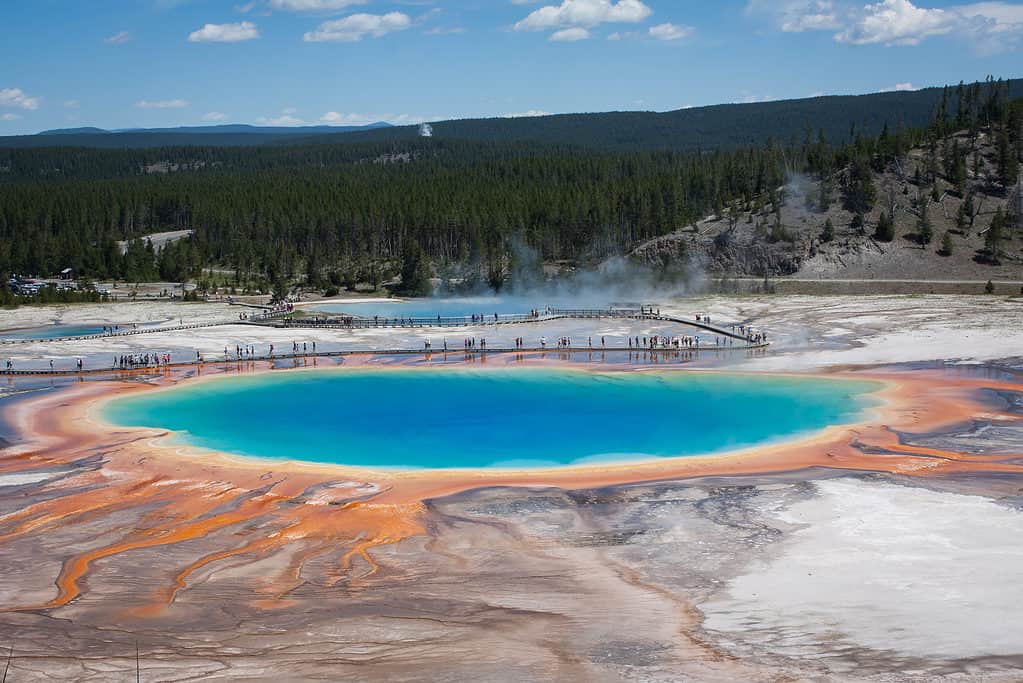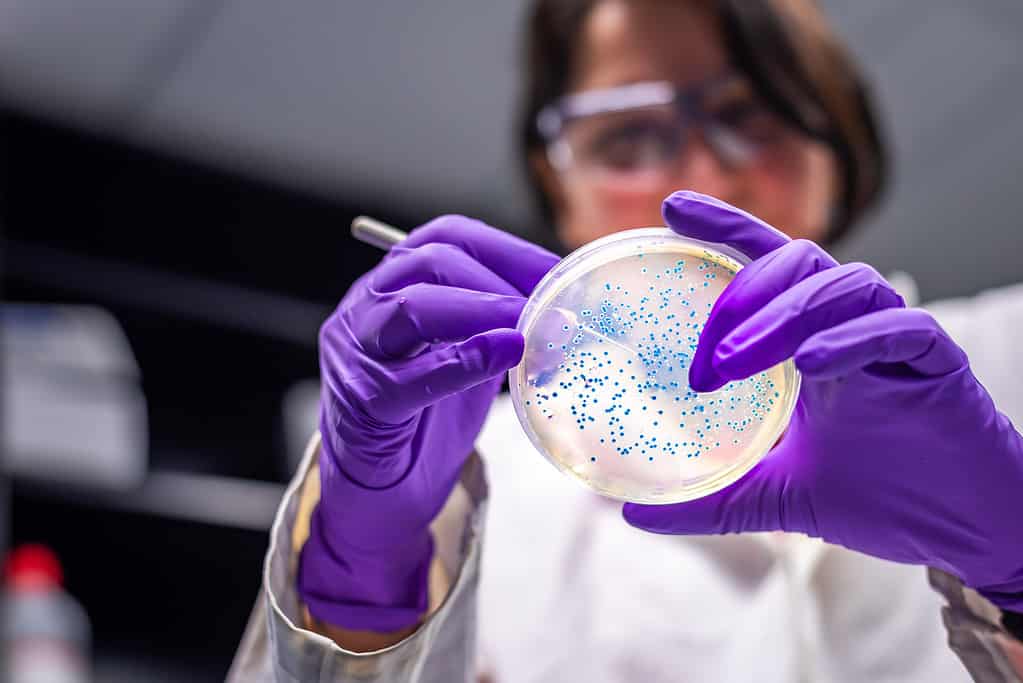Organisms are all over the world and they help to form the life as we know it. There are three major domains of life on Earth and these are archaea, bacteria, and eukarya. While eukarya contains things such as plants, animals, and fungi, bacteria and archaea contain a vast number of tiny microbial species. Bacteria are found all over the world and are widely known for causing infections and diseases, although they are an essential part of the ecosystem. However, archaea are a group of primitive organisms which live in some of the harshest environments on Earth. Archaea are very similar to bacteria, although not completely the same. Read on to discover everything you need to know about archaea vs. bacteria!
Comparing Bacteria vs. Archaea
Archaea and bacteria are very similar in a number of ways, and for a long time archaea were considered to be bacteria. However, there are some very distinct differences that set them apart. Take a look at the table below to learn some of the key differences.
| Bacteria | Archaea | |
|---|---|---|
| Type | Gram-positive and gram-negative | Halophile, methanogen, thermophile |
| Habitat | Variety of habitats, including living organisms | Extreme environments such as the hot springs, mountains, and the sea |
| Cell Wall | Made from peptidoglycan | Made from pseudopeptidoglycan |
| Membrane Lipids | Bound by ester bonds | Bound by ether bonds |
| Photosynthesis | Some bacteria can use photosynthesis | Do not perform photosynthesis |
| Thymine | Not present | Present |
| Spores | Can produce spores | Does not produce spores |
| Pathogenicity | Can be pathogenic or non-pathogenic | Non-pathogenic |
| Introns | Not present | Present |
The 7 Key Differences Between Archaea and Bacteria
Archaea vs. Bacteria: Habitat

Archaea live in harsh environments including places with extreme temperatures such as hot springs.
©Busara/Shutterstock.com
The first difference between archaea and bacteria is where they reside. Bacteria can live in a wide variety of habitats all across the world. They can live in soil, water, and even rocks. But, more importantly, they can even live inside living organisms — such as plants, animals, and even in our very own body.
Archaea live in harsh, extreme environments in places where other organisms struggle. These include places with extremes of temperatures, and in places such as hot springs, mountains, and even at the bottom of the sea. Archaea don’t widely occur in the human body like bacteria do, and it has only recently been discovered that they can live in the human gut.
Archaea are able to be classified into three groups based on their characteristics, and some of these include their habitats. The three groups are halophiles, thermophiles, and methanogens. Halophiles are organisms that grow in places where there is a high concentration of salt — such as salt lakes. Thermophiles are organisms that can survive at extremely high temperatures — approximately 113 to 252 degrees Fahrenheit. Finally, methanogens are organisms that can produce methane as a by-product in low-oxygen conditions, such as wetlands.
Archaea vs. Bacteria: Cell Wall

Gram-positive bacteria have a thick layer of peptidoglycan and appears purple during the test because the cell wall retains the violet stain.
©iStock.com/Md Saiful Islam Khan
The next difference between the two is the composition of their cell wall. The bacterial cell wall is predominantly made from peptidoglycan (also known as murein). This substance is only found in the cell walls of bacteria and exists nowhere else on earth. Its function is to create a rigid wall around the cytoplasmic membrane and protect the bacterial cells throughout their lifetime. Peptidoglycan consists of repeating units of N-acetylglucosamine and N-acetylmuramic acid and these are typically cross-linked by short peptide chains.
Furthermore, bacteria can then be classified into two groups — gram-positive and gram-negative — based on their cell wall and the color that they turn when the staining method is used. Gram-positive bacteria have a thick layer of peptidoglycan in their cell wall and produce a purple color during the test because the cell wall retains the violet stain. Gram-negative bacteria have a thin layer of peptidoglycan on their cell wall and do not retain the stain.
On the other hand, archaeal cell walls are made from pseudopeptidoglycan. Although it resembles peptidoglycan in structure, it is actually comprised of two sugars — N-acetylglucosamine and N-acetyltalosaminuronic acid. These are then linked by glycosidic bonds.
Archaea vs. Bacteria: Membrane Lipids
Both archaea and bacteria have membrane lipids which form the surface of the cells. However, the bacterial membrane lipids are made from fatty acids which are bound with ester bonds, while the archaea membrane lipids are made from isoprenoid chains and bound by ether bonds.
Archaea vs. Bacteria: Photosynthesis
Another difference between archaea and bacteria is their ability to perform photosynthesis. Archaea do not perform photosynthesis, although phototrophic archaea can use sunlight as a form of energy. However, there are some types of bacteria — chlorobi, chloroflexi, cyanobacteria, heliobacteria, and proteobacteria — which perform photosynthesis.
Archaea vs. Bacteria: Thymine
Next, we have the presence of thymine. Thymine is a chemical compound that is one of the building blocks of DNA. However, thymine is only present in archaea and not in bacteria. Instead, uracil replaces thymine in the DNA of bacteria.
Archaea vs. Bacteria: Pathogenicity
Another notable difference between archaea and bacteria is their ability to cause disease. As we know, some bacteria can cause diseases — meaning that they are pathogenic — while others don’t (non-pathogenic). However, all archaea are non-pathogenic as they do not cause disease.
Archaea vs. Bacteria: Spores
Moving on to the production of spores. Spores are reproductive cells that are able to form new individuals without the need for sexual fusion, even in tough or unfavourable conditions. Spores are produced by bacteria, plants, and some fungi. However, archaea do not produce any spores at all.
Examples
It can be difficult to understand which is which when it comes to archaea and bacteria, even after reading about their differences. Luckily, we’ve provided a few examples to help you remember!
Archaea
- Sulfolobus: Is a genera of thermophile archaea which occurs at temperatures between 104 and 131 °F. They are typically found in volcanic springs.
- Halobacterium : Is a genera of halophilic archaea which live in areas with a high concentration of salt – including the Dead Sea and Great Salt Lake.
- Methanosarcina: Is a genera of methanogenic archaea which produces methane but lives in low-oxygen environments. This can be in places such as the digestive tracts of animals, in deep sea valleys, or in places such as wetlands and mudflats.
Bacteria

is an example of a gram-negative bacteria.
©iStock.com/Manjurul
- Staphylococcus aureus: Is a gram-positive bacterium which is one of the most common causes of infections in humans in the skin and upper-respiratory tract — including abscesses, pimples, and sinusitis.
- Escherichia coli (E.coli): Is a gram-negative bacterium which is found in a variety of environments — including the lower intestines of humans and animals, and in soil, food, and water. It does not produce spores.
- Clostridium tetani (Tetanus): Is a gram-positive bacteria that produces spores. As well as being found inside the body of humans and animals, tetanus can exist outside of it too. Spores can be found in many places in the environment, such as soil and animal manure, and can lie dormant for a long time.
The photo featured at the top of this post is ©
Thank you for reading! Have some feedback for us? Contact the AZ Animals editorial team.






